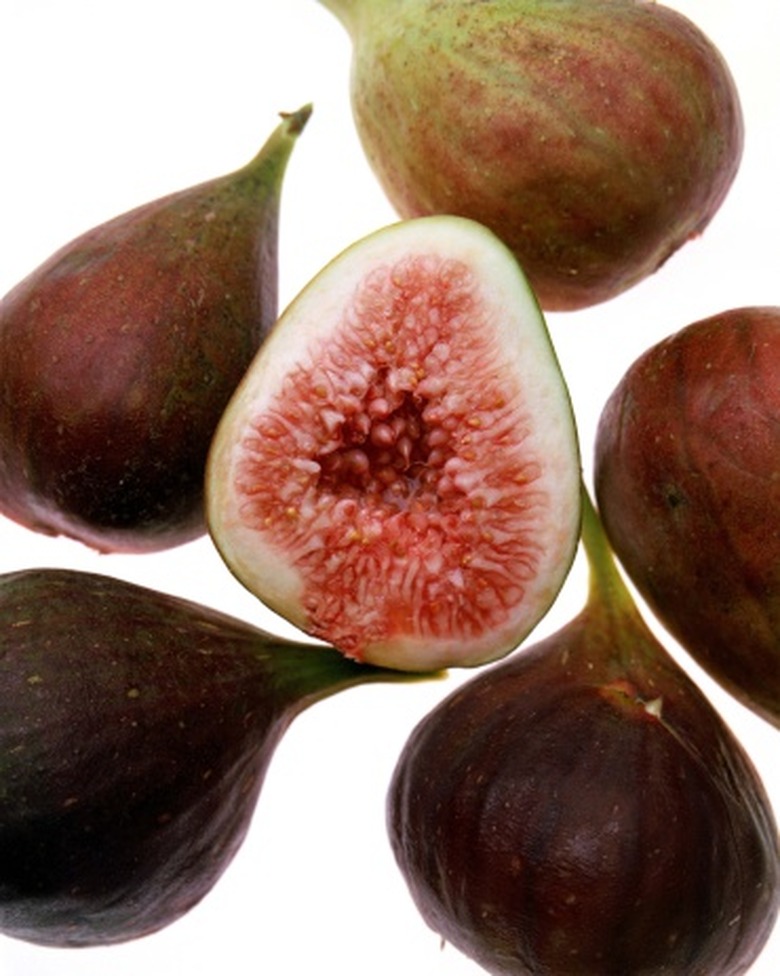Why Are My Figs Falling Off Before They Are Ripe?
Figs are members of the Ficus genus, a grouping of vines and viney trees that produces a unique fruit. Commercially, growers produce the Smyrna fig, San Pedro fig and common fig. These fig varieties produce reliably, yielding large, sweet fruit, but may suffer from fruit drop in the wrong environmental conditions or when the correct pollinators are unavailable.
Smyrna Figs
The Smyrna fig produces large, edible fruit containing true seeds. It was first brought to the United States in the late 19th century. However, this type of fig requires the presence of Blastophaga wasps, as well as a nonedible type of fig tree called a caprifig. The caprifig produces pollen, which the wasp carries to the Smyrna fig. Only after pollination from the caprifig will the Smyrna type produce normal fruit. In the absence of these pollinators, the fig produces fruit that drops from the tree during the growing season.
- Figs are members of the Ficus genus, a grouping of vines and viney trees that produces a unique fruit.
- However, this type of fig requires the presence of Blastophaga wasps, as well as a nonedible type of fig tree called a caprifig.
San Pedro Figs
This fig tree can bear two crops of fruit in a single season – the first on the previous season's growth, and the second on new growth. The first crop requires no pollination and will develop properly under good growing conditions. The second crop requires pollination by Blastophaga wasps and the caprifig, much like the Smyrna fig. In areas where these pollinators are not present, the fruit fails to set and falls from the tree.
Water Stress
Too little water can cause fruit drop in fig varieties that lack true seeds, such as the common and San Pedro fig. This problem is most common in areas with very hot, dry weather. Shallow soil can increase the risk of this problem. Provide plenty of water in hot climates to keep the fruit on the tree. Irrigate regularly and do not allow the soil around the tree to become extremely dry.
- This fig tree can bear two crops of fruit in a single season – the first on the previous season's growth, and the second on new growth.
- In areas where these pollinators are not present, the fruit fails to set and falls from the tree.
Root Damage
In areas with poor drainage, overwatering fig trees can also cause fruit to fall off the tree early. Too much water can deoxygenate the soil and damage the roots. Wet conditions can also encourage root rot fungi and bacterial infections. Never plant figs in sites where water stands for more than 24 hours after rainfall.
Nematodes
Nematode infestations of the tree roots encourage premature fruit drop. Purdue University, recommends planting figs close to a wall or building, or under heavy mulch, to allow roots to escape damage from these pests. Growers can also apply nematicide chemicals. Whenever possible, acquire plants already free of nematodes and plant in soil that has been cleared of these pests.
- In areas with poor drainage, overwatering fig trees can also cause fruit to fall off the tree early.
